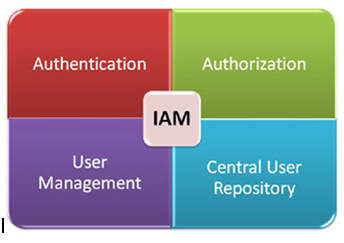The future of the Cloud Identity Management (IAM) is shiny & bright, with both SMBs and enterprise businesses pouring in money to protect their data and digital assets.
A new report by Allied Market Research projects that the global cloud IAM market would garner revenue of $2.8 billion by 2020, registering a CAGR of 26.2% during the forecast period 2015 – 2020.
Join in this Cloud evolution with Sysfore and secure your business!
Varied technological environments, increasing cyber-attacks, strict regulatory compliances, and increasing digital identities across organizations, are propelling the need of IAM services for information security. With this high stake involved, it’s natural for businesses to look towards the cloud to manage their digital identities, both inside and outside an enterprise.
Traditional concepts for Identity and Access Management that have been focused on the internal IT are no longer sufficient. We still need some of these, but they cover only a fraction of the future scope – and for some organizations already today’s scope – of Identity and Access Management.
The following measures for future Identity and Access Management might help organizations shape their own strategy and roadmap for Identity and Access Management.
#1: More than humans – It’s about Identities of things, devices, services, and apps
In this connected world, everything has an identity – whether it is something like a smart meter, one of the various connected elements in connected vehicles, or wearable tech. All of them require access to be managed through apps, services, devices, etc.
The numerous identities has changed the way in which they are accessed and interfaced with other humans, things, devices, services and apps. It requires authentication and management of relationships between identities.
#2: Multiple Identity Providers – Varied options
There is no central directory anymore, neither for humans nor for all the other things and services. It’s impossible to manage millions of customers spread across the world. Plus, the customers want to re-use identities across apps, services and companies encouraging the BYOI (Bring Your Own Identity) concept.
#3: Multiple Attribute Providers – Information on identities
The Identity and Access Management, will now be the source of information for Cloud, Mobile, and Social Computing, OT (Operational Technology) security, APIs (through which the apps, services and systems interact with each other through and which need to be protected) and the apps, and the Internet of Things. There will be many sources of trust for various attributes.
#4: Multiple Identities – Many users with different identities and flexibly to switch
A single user may have multiple identities within a same organization. He could be an employee, a freelance contractor, and a customer of the same corporation all at the same time. Organizations have to understand that it is still the same person, when he switches from one account to another.
#5: Multiple Authenticators – There is no single authenticator that works for all
There are so many different types of identities and related elements, that it’s not feasible for a single method of authentication which will guarantee security of your identity. There is no single approach that we can rely on. IAM will have to support different authentication mechanisms such as Risk Based Authentication, biometrics, single sign on etc, while understanding the risk and making risk-aware access decisions.
#6: Context – Identity and Access Risk varies in context
A key concept of Future Identity and Access Management is context. Which device is someone using? Which type of authentication? Where is the device used? There are many elements that make up the context. Depending on that context, risk varies. Identity and Access Management has to become risk-based and, with the ever-changing context, dynamic. While today’s static access controls implicitly reflect a risk understanding in a static context, future access controls and decisions must become dynamic to adapt to the current context.
Keeping these fundamental measures in mind, Sysfore can help you build a secure, and protected cloud environment for your business. You contact us at info@sysfore.com or call us at +91-80-4110-5555 to know more.


